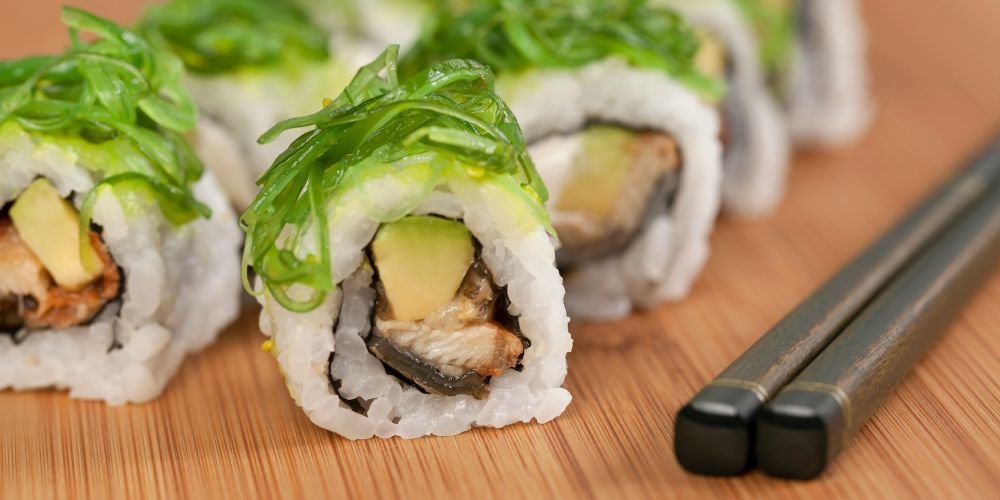Seaweed Delights: A Culinary Voyage Through Ocean’s Bounty

Introduction
Seaweed, once a hidden gem of coastal cuisines, is now making waves in global culinary landscapes. Its unique flavors, versatile textures, and impressive nutritional profile have turned this oceanic superfood into a global sensation. From the savory umami of nori in sushi to the earthy richness of kombu in broth, seaweed has transcended cultural boundaries to become a beloved ingredient in kitchens worldwide. In this gastronomic exploration, we’ll embark on a flavorful journey through the diverse types of seaweed macroalgae and the mouthwatering ways they’re revolutionizing global cuisine.
Types of Seaweed and Their Culinary Magic
Nori (Porphyra spp.): Nori, with its delicate texture and distinct umami taste, is the star of sushi rolls, hand rolls, and rice balls. It can also be crisped and used as a garnish for soups, salads, or rice dishes. In Korean cuisine, nori is employed to make seasoned snacks called “gim.”
Kombu (Laminaria spp.): Kombu’s savory and slightly sweet flavor infuses broths and stews with depth. It’s a cornerstone of Japanese dashi, the foundation for miso soup, and adds complexity to simmered dishes like “oden.” Kombu can also be pickled or used as a flavorful wrap for rice balls.
Wakame (Undaria pinnatifida): Tender wakame leaves are perfect for adding a delightful briny flavor to salads and miso soup. In Korea, wakame is featured in dishes like “miyeokguk,” a seaweed soup traditionally consumed on birthdays.
Dulse (Palmaria palmata): Dulse, characterized by its vibrant red hue and subtle smokiness, is enjoyed as a crunchy snack when dried or used as a bacon substitute in sandwiches and salads. In Iceland, dulse is a popular ingredient in traditional dishes like “kjötsúpa” (lamb soup).
Sea Lettuce (Ulva spp.): Sea lettuce’s vibrant green color and delicate texture make it a fantastic addition to salads, sushi, and as a garnish for seafood dishes. In Ireland, sea lettuce is used in soups and seafood recipes.
Global Culinary Fusion: How Seaweed Adapts to Different Cuisines
Japanese Cuisine: Japan’s deep-rooted culinary traditions have embraced seaweed in various forms. Sushi and sashimi are incomplete without nori, while kombu forms the essence of dashi, the heart of Japanese cooking. Additionally, wakame salads and miso soup are everyday staples.
Korean Cuisine: Korean cuisine showcases seaweed’s versatility, from the famous “gim” (seaweed sheets) used to wrap rice and meat to hearty seaweed soups like “miyeokguk.” Seaweed is integral to banchan (side dishes) and is often pickled or seasoned with sesame oil and soy sauce.
Chinese Cuisine: Chinese cuisine celebrates seaweed in dishes like “Hǎidài” (sea moss) salad and “Zhēncǎi” (preserved vegetables). Seaweed is also used to enhance the flavors of stir-fries and noodle dishes.
Western Cuisine: In the West, seaweed is gaining popularity as a sustainable and nutritious ingredient. Dulse finds its way into plant-based bacon, while chefs experiment with seaweed-infused broths, risottos, and even ice creams.
Recent Culinary Trends and Innovations
Plant-Based Seaweed Snacks: Seaweed chips and snacks, often seasoned with enticing flavors like sesame and chili, have become a trendy and healthy alternative to traditional potato chips.
Seaweed Pasta: Pasta made from seaweed flour or infused with seaweed extracts offers a unique umami twist to Italian cuisine while catering to gluten-free and low-carb diets.
Seaweed Condiments: Seaweed-based condiments, such as seaweed salt or furikake (a Japanese seasoning), add depth and flavor to dishes like rice, eggs, and vegetables.
Seaweed Cocktails: Mixologists are experimenting with seaweed-infused spirits and garnishes, creating innovative and savory cocktails.
The Global Seaweed Revolution
Seaweed’s culinary allure transcends borders and enriches dishes across the globe. Its journey from coastal kitchens to Michelin-starred restaurants reflects not only its deliciousness but also its contribution to sustainable and climate-friendly dining. As global cuisines continue to embrace the flavors of the ocean, seaweed’s status as a culinary treasure is poised to grow.
References:
- Bleakley, S., & Hayes, M. (2017). Algal proteins: Extraction, application, and challenges concerning production. Foods, 6(5), 33.
- Mouritsen, O. G., & Duelund, L. (2017). Seaweeds: Edible, available, and sustainable. In Seaweeds (pp. 1-18). Academic Press.
- Rasmussen, R. S. (2016). The Atlantic dulse (Palmaria palmata): This red alga should have a bigger role in our diet. Journal of Applied Phycology, 28(1), 511-518.
- Chapman, A., & Lindesay, S. (2018). An investigation of the eating quality of dulse Palmaria palmata and its potential use in multi-component functional foods. Journal of Applied Phycology, 30(5), 2859-2867.


